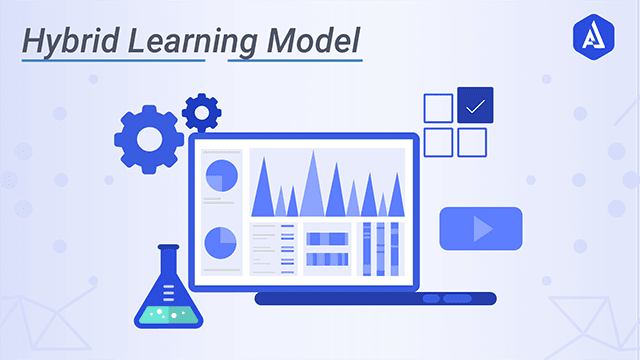Hybrid Time Series modeling: A more advanced approach to time-series forecasting by combining the best aspects of Econometric and Machine Learning models, two co-existing approaches both with different strengths and limitations. An innovative hybrid framework compensates the limitations of one approach with the strengths of the other.
Python and R implementation from scratch inspired by Zhang (2003) and Smyl (2020).
Version: 1.2 (2020)
Hybrid models promise to advance time-series forecasting by combining two co-existing approaches: Econometrics and Machine Learning models, both comes with different strengths and limitations. It combines the best aspects of statistics and Machine Learning, where one compensates for the weakness with the strengths of the other. That is, the effectiveness of statistical methods with limited data availability can counteract the extensive data requirements of Machine Learning. In turn, the consideration of a priori knowledge can simplify the expected forecasting task and decrease the computational effort, allowing hybrid methods to incorporate cross-learning, a capability that many statistical methods lack. This methodology is plausible as a time-series is composed of a linear and a nonlinear component. The statistical model is fitted to capture the linear component, so consequently, the residuals from the linear model account for the nonlinear relationship. The Machine Learning model takes the past residuals as input to learn a function that can be used to forecast the deviation of the linear predictions. Therefore, as real-world time-series may be purely linear, purely nonlinear, or often contain a combination of those two patterns, hybridization provides a solution to the dilemma of the assumption of linearity, in contrast to traditional approches where most reach their limits.
Hybrid Time Series Modeling in R:
Google Colab | Code
Hybrid Time Series Modeling in Python:
Google Colab | Code
- Linux or macOS
- python 3.8 or R
- pmarima 1.8.4
- lightgbm 3.3.2
- bayesian-optimization 1.2.0
- CPU or NVIDIA GPU + CUDA CuDNN
- Clone this repository.
git clone https://github.com/huytjuh/Hybrid-Time-Series-Modeling
cd Hybrid-Time-Series-Modeling
- Install Python dependencies using
requirements.txt.
pip install -r requirements.txt
- Download an univariate time-series dataset:
datasets/station_case.csv
- Train Hybrid Time Series Model (default: ARIMA-RF)
#!./scripts/run_train.sh
python3 train.py --model1 ARIMA --model2 RF
- Test Hybrid Time Series Model (default: ARIMA-RF)
#!./scripts/run_main.sh
pyton3 main.py --model1 ARIMA --model2 RF
The table below lists the Time Series Forecasting models currently available in the repository, including its hybrid framework. Python scripts are linked under the Code column, explaining in detail the math and implementation of the algorithm including comments and documentations.
| Algorithm | Type | Description | Code |
|---|---|---|---|
| (S)ARIMA | Statistical | ARIMA is a statistical autoregressive integrated moving average model in Econometrics for time-series forecasting, consisting of an Auto Regressive (AR) and Moving Average (MA) part. | Code |
| Holter-Winter (HW) |
Exponential Smoothing | Holt-Winter is a simple but popular exponential smoothing method for time-series forecasting using a combination of three smoothing methods built on top of each-other. | Code |
| Random Forest (RF) | Machine Learning | Random Forest is both a classification and regression method based on the ensemble of decision trees and by aggregating multiple trees, bootstrapping, and trained on different parts, it aims to reduce the variance and prevent overfitting. | Code |
| XGBoost | Machine Learning | XGBoost is a decision-tree based ensemble algorithm, similar to RF, but uses a gradient boosting framework; rather than building multiple independent trees, it aims to improve the existing decision tree one at a time using a highly efficient framework. | Code |
| lightGBM | Machine Learning | Similar to XGBoost, it is a decision-tree based ensemble algorithm, but focus more on faster computation time over accuracy by performing leaf-wise (vertical) growth, as opposed to level-wise deep growth in XGBoost, resulting in faster loss reduction. | Code |
| Support Vector Machine (SVM) |
Machine Learning | Support Vector Machine is both a classification and regression method aiming to find a hyperplane in an N-dimensional space that distrinctly classifies the data points by calculating the maximum distance between data points of classes and using kernel trick, implicitly mapping their inputs into high-dimensional feature spaces. | Code |
| Long Short-Term Memory (LSTM) |
Machine Learning | Long Short-Term Memory is a recurrent neural network architecture capable of incorporating long-term dependencies due to feedback connections and able to process entire sequences of data using memory cells to store information over longer time intervals. | Code |
Hybridization can be applied by applying a statistical or exponential smoothing method to the time-series which from the resulting residuals a Machine Learning model can be applied on top of the initial model aiming to predict the non-linear structure of a time-series.
| N-Step Ahead | Clustering | ARIMA | RF | LSTM | ARIMA-RF | ARIMA-LSTM |
|---|---|---|---|---|---|---|
| 1-month | Hierarchical | -12.06% | 26.34% | 3.14% | 7.20% | -3.82% |
| 1-month | SOM | -3.28% | 27.10% | 27.33% | 9.26% | -1.80% |
| 5-month | Hierarchical | -4.03% | -8.94% | 3.32% | 6.65% | 11.90% |
| 5-month | SOM | -0.67% | -8.74% | -2.60% | 6.37% | 10.52% |
| 12-month | Hierarchical | -9.53% | -33.80% | 0.92% | 5.07% | 5.89% |
| 12-month | SOM | -2.56% | -18.45% | 1.91% | 4.25% | 4.71% |
Note. The value represents the relative improvement in RMSE when the respective STS Clustering is incorporated compared to the naive method of adding seasonal component as explanatory variables. The respective values are a mean RMSE estimate of over 100 univariate time-series.
-
Zhang, G. P. (2003). Time series forecasting using a hybrid ARIMA and neural network model. Neurocomputing, 50, 159-175. Available online: Link
-
Smyl, S. (2020). A hybrid method of exponential smoothing and recurrent neural networks for time series forecasting. International Journal of Forecasting, 36(1), 75-85. Available online: Link
.


